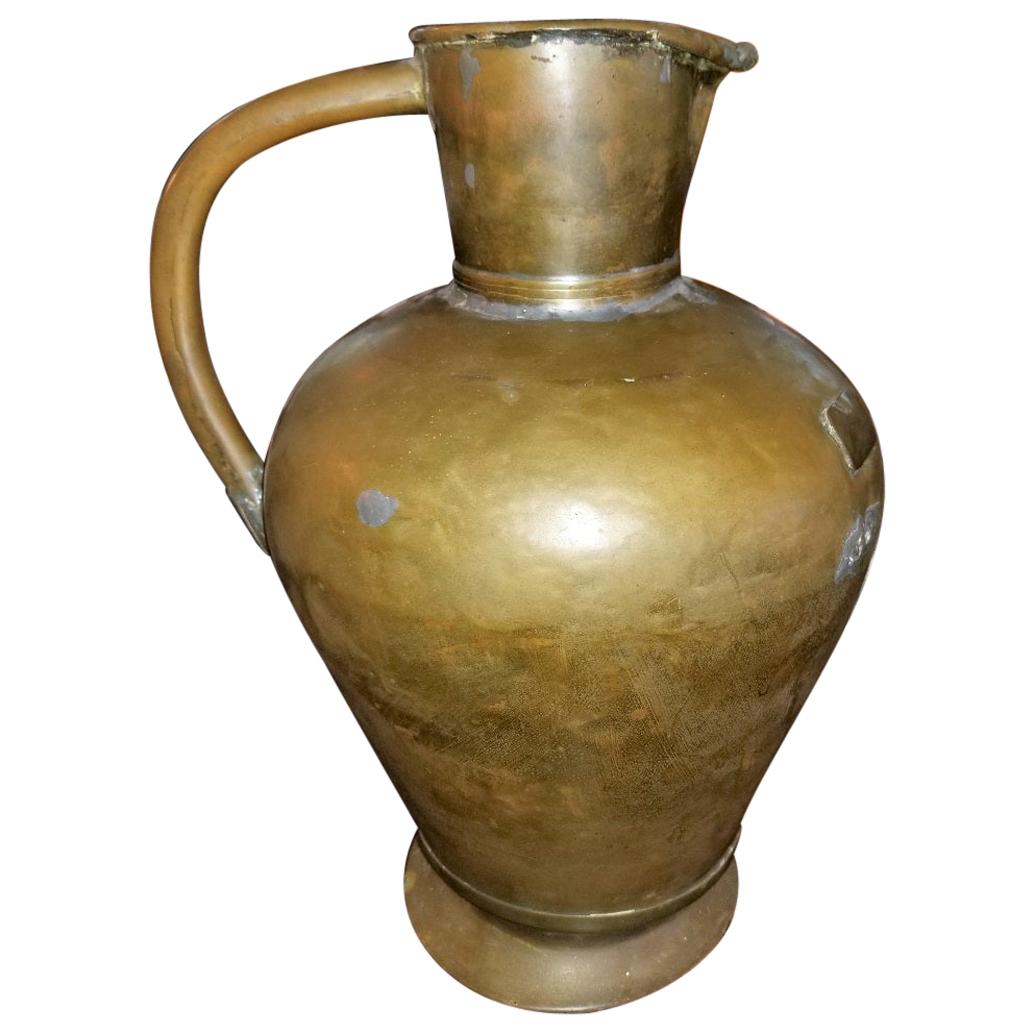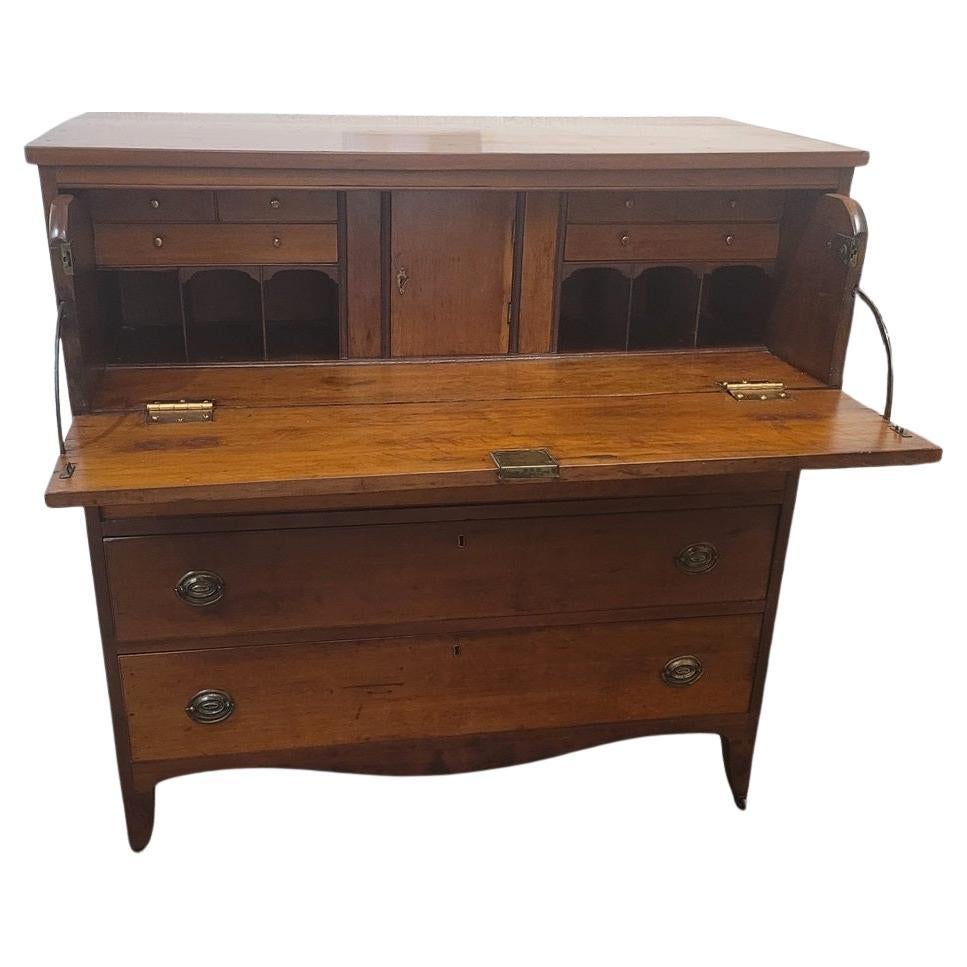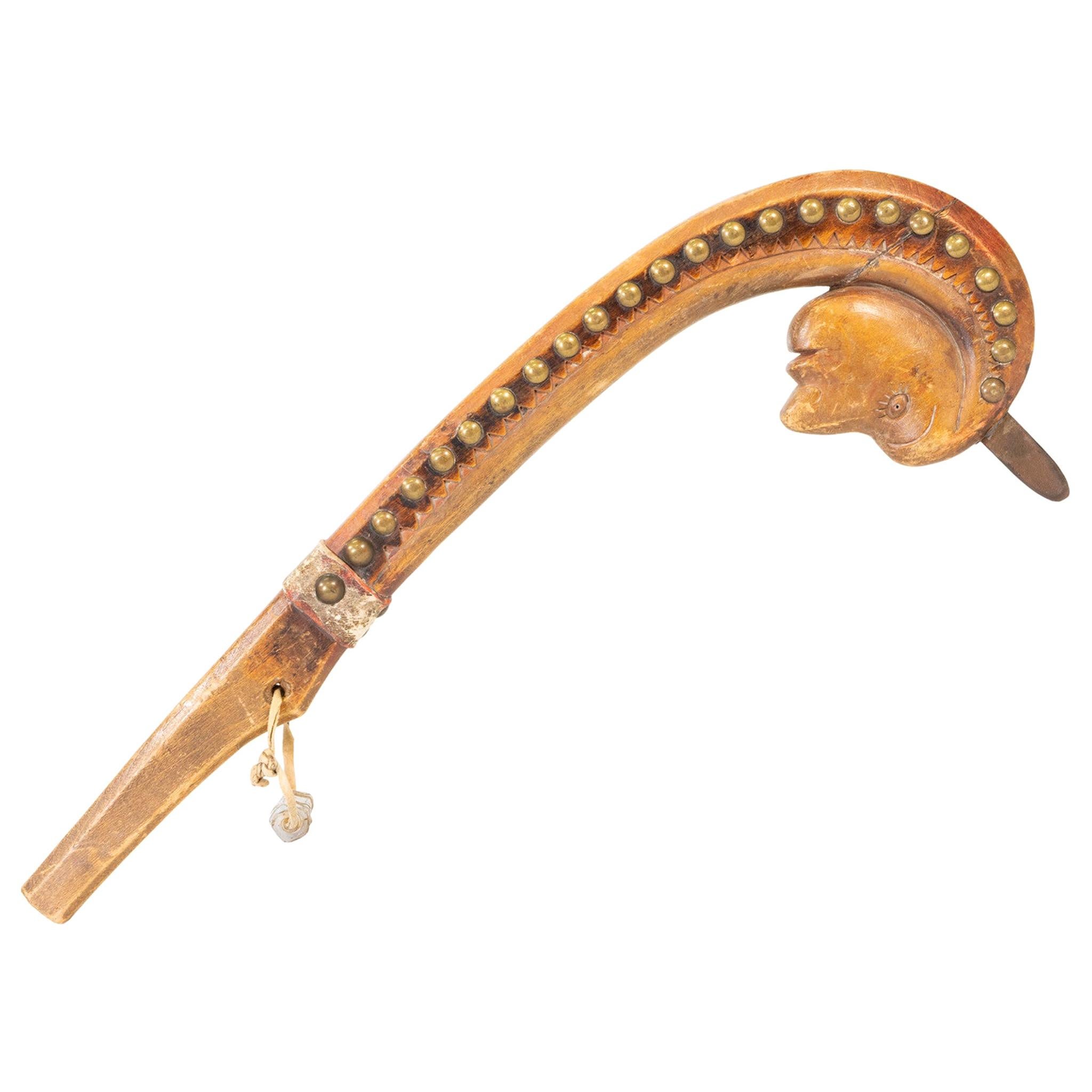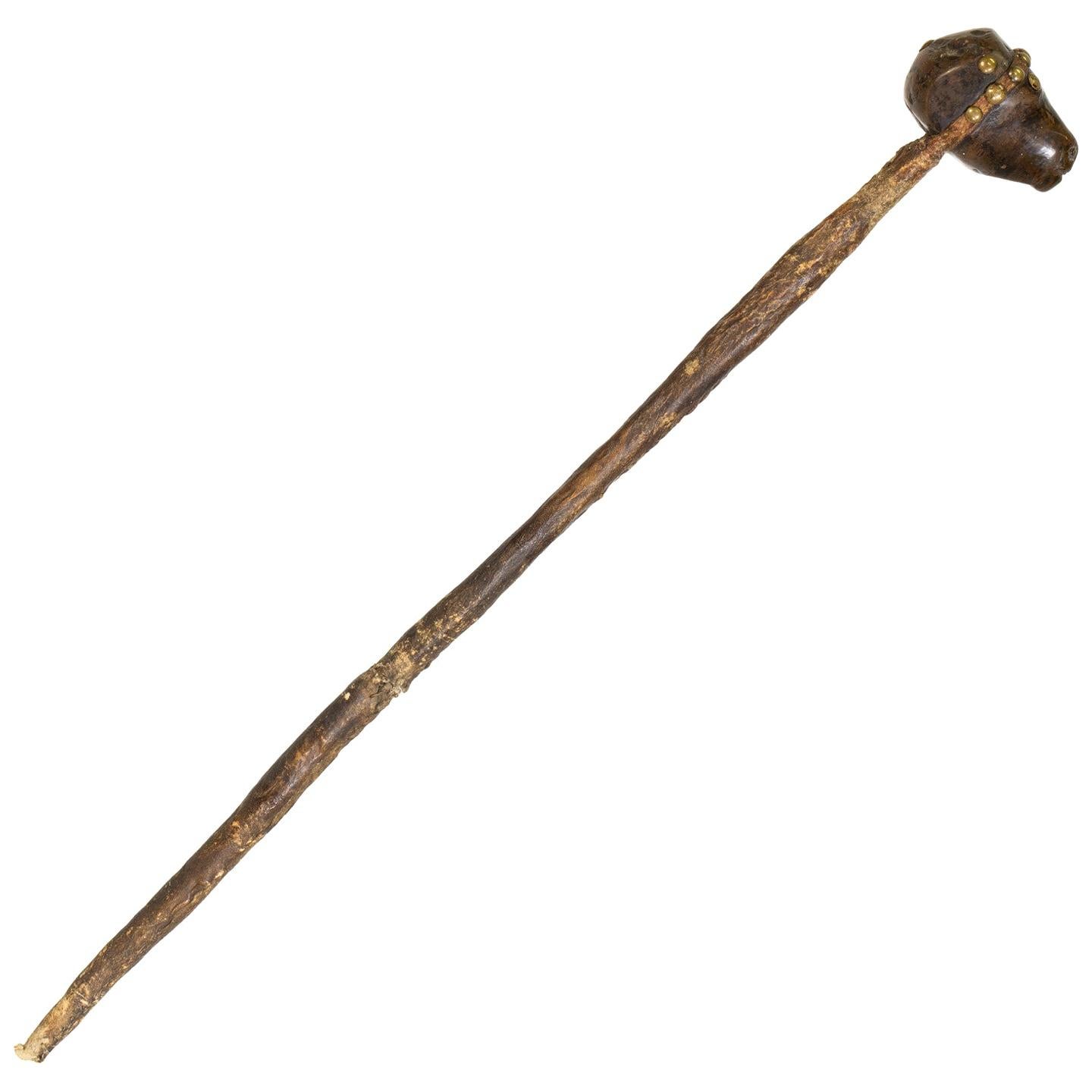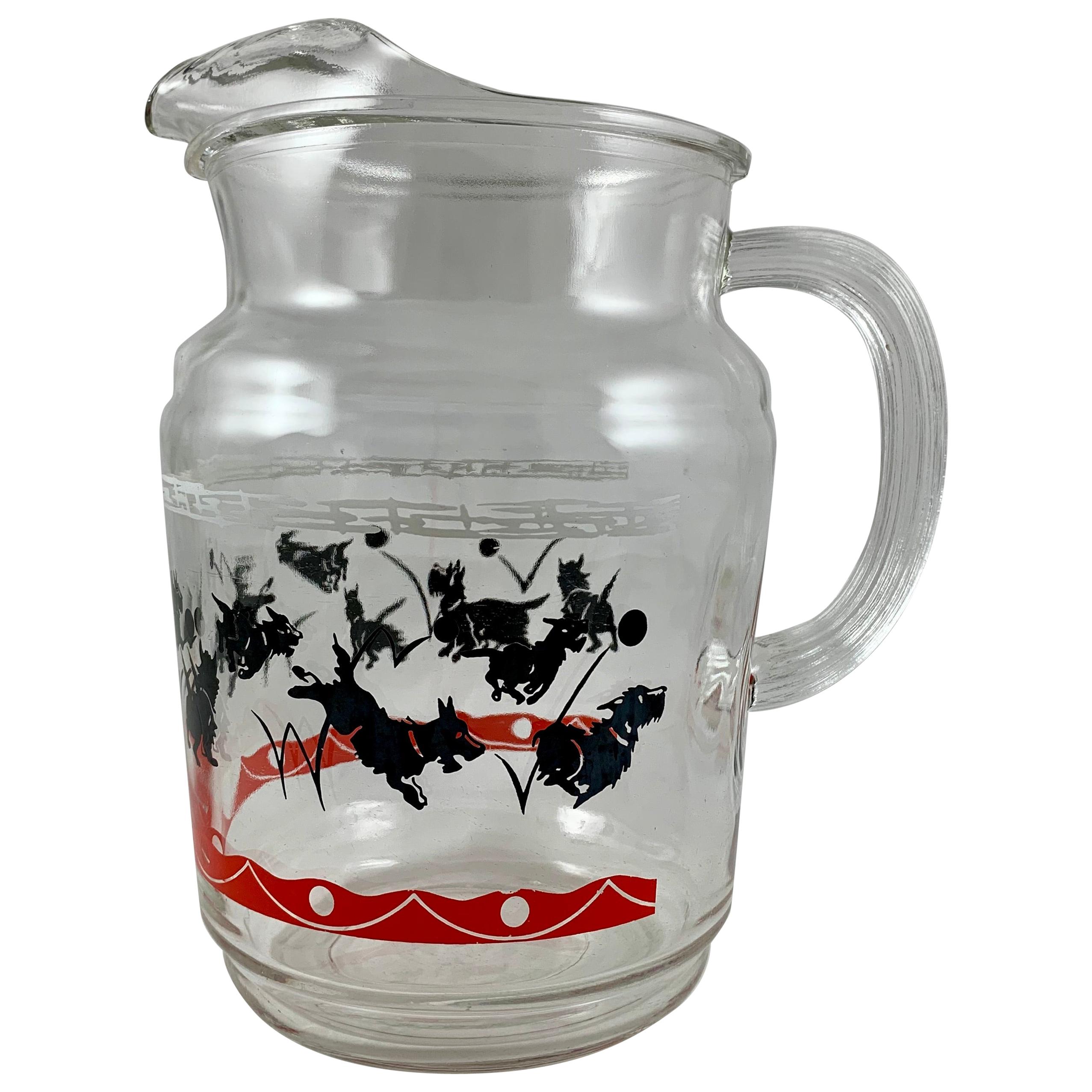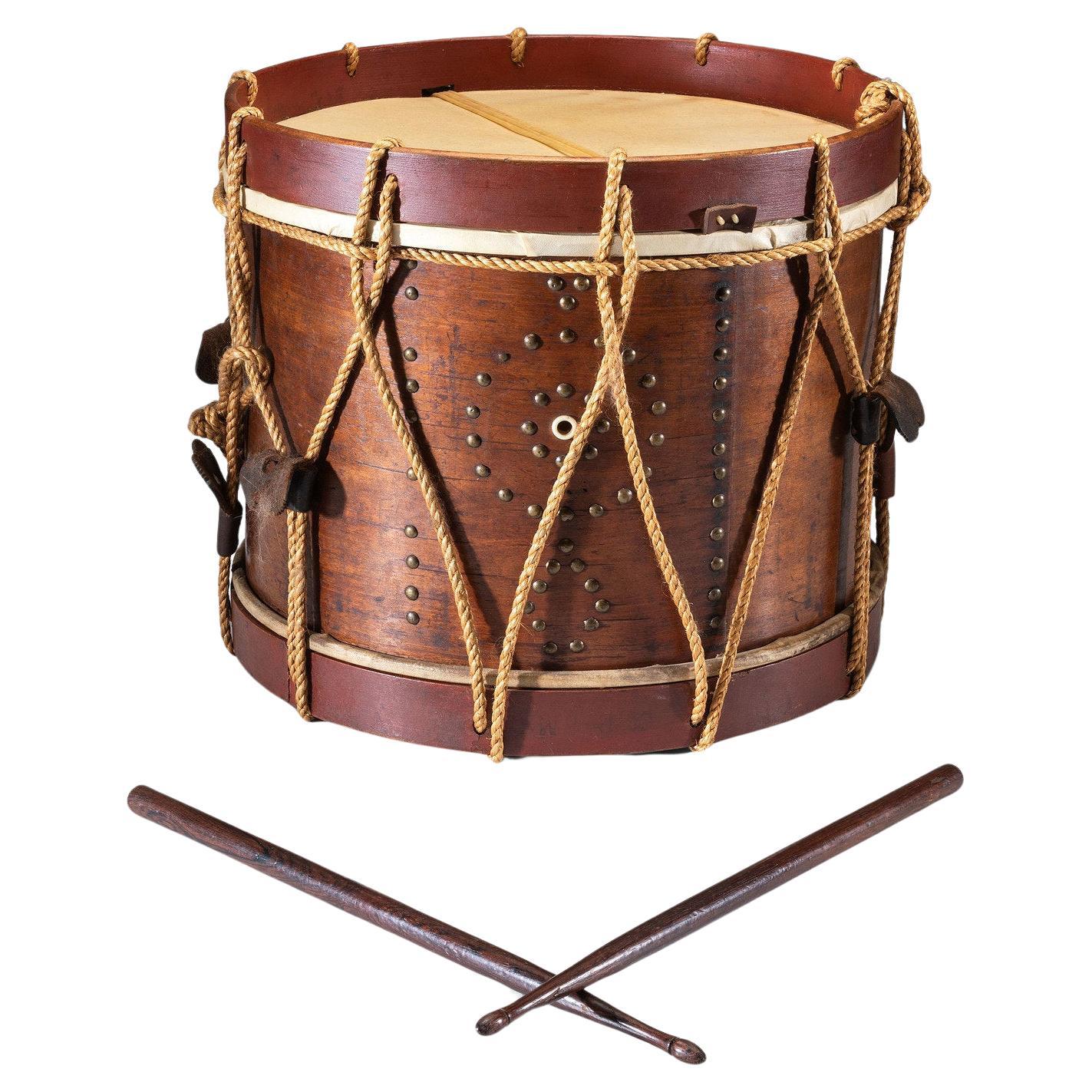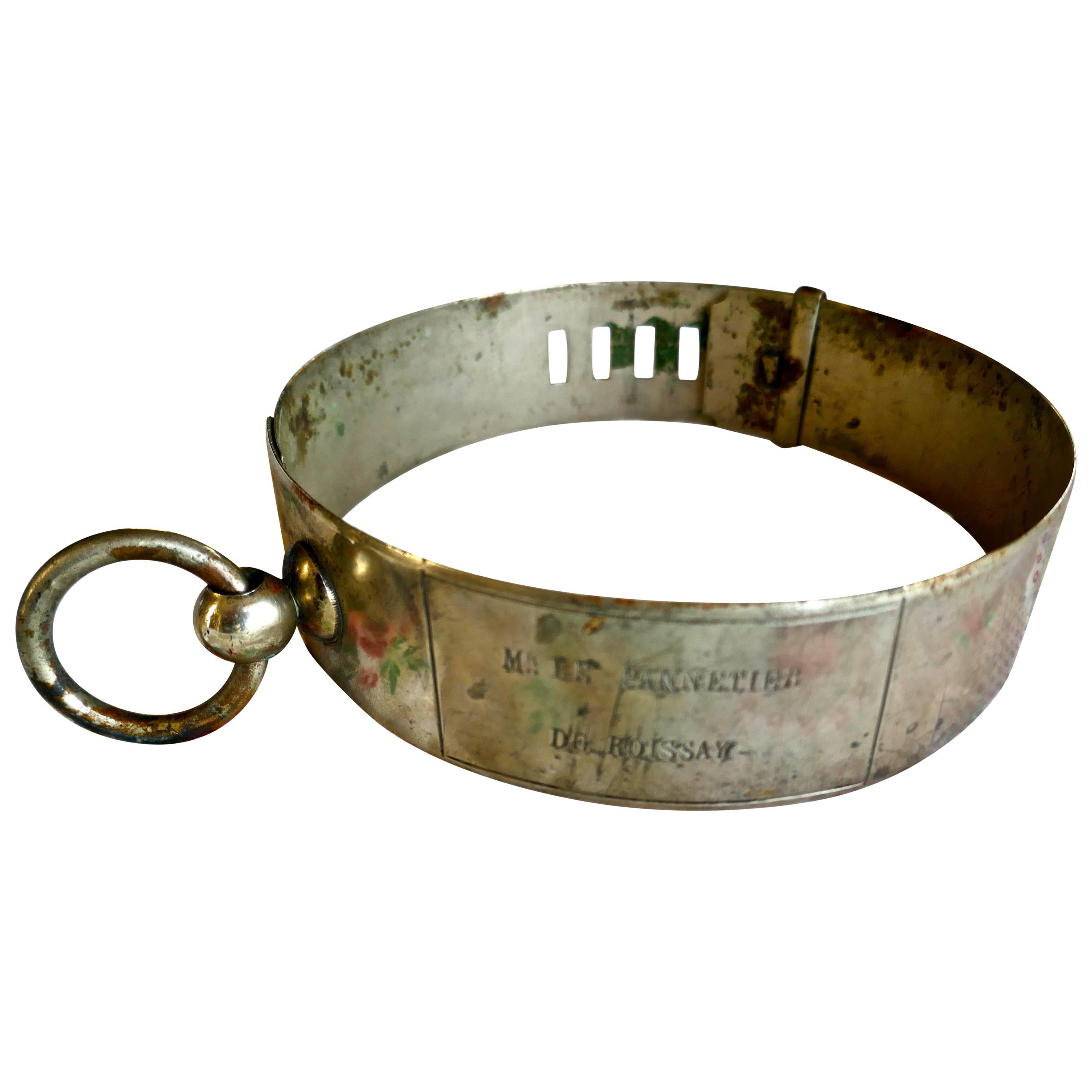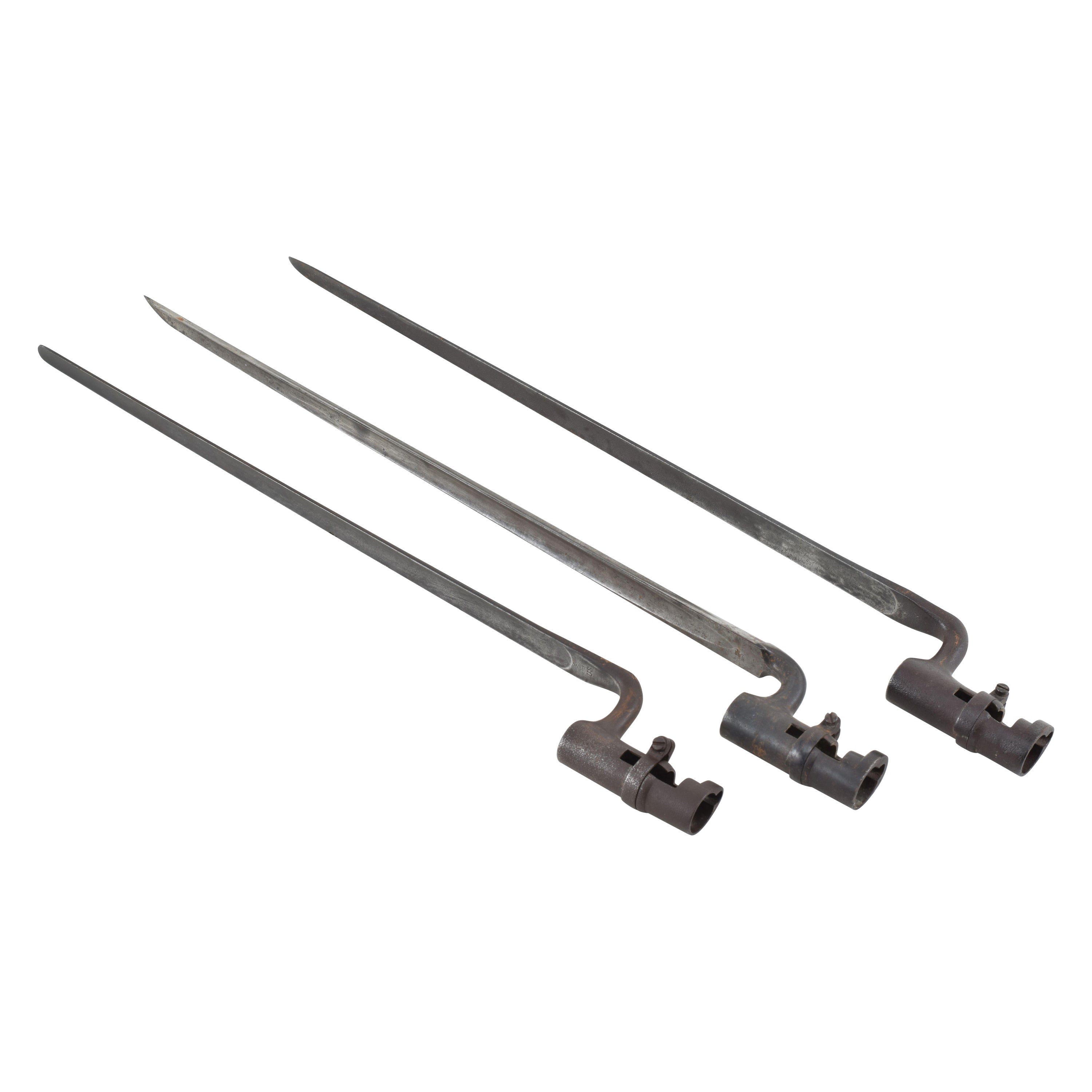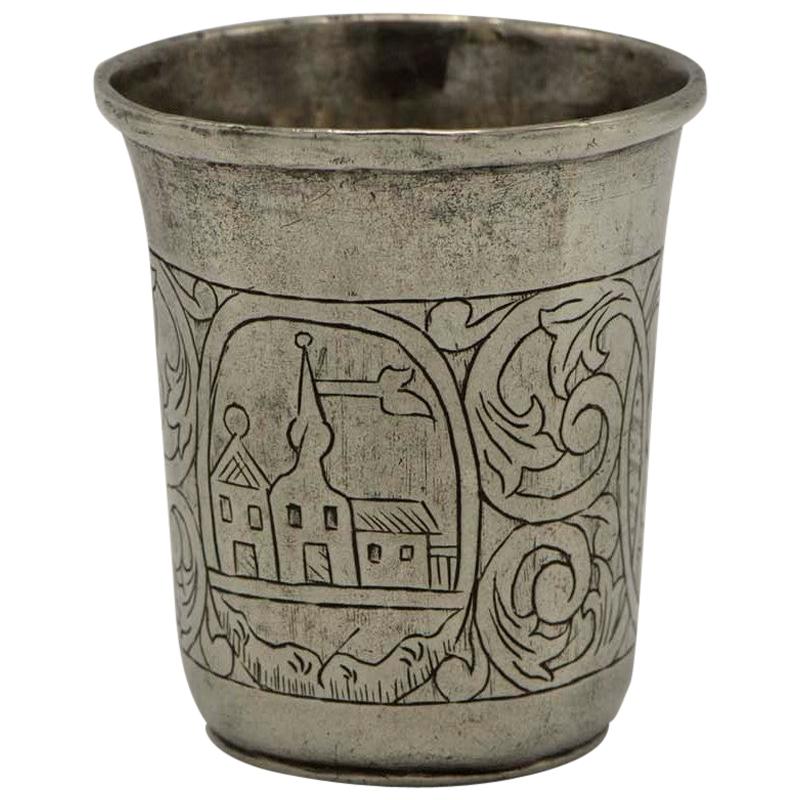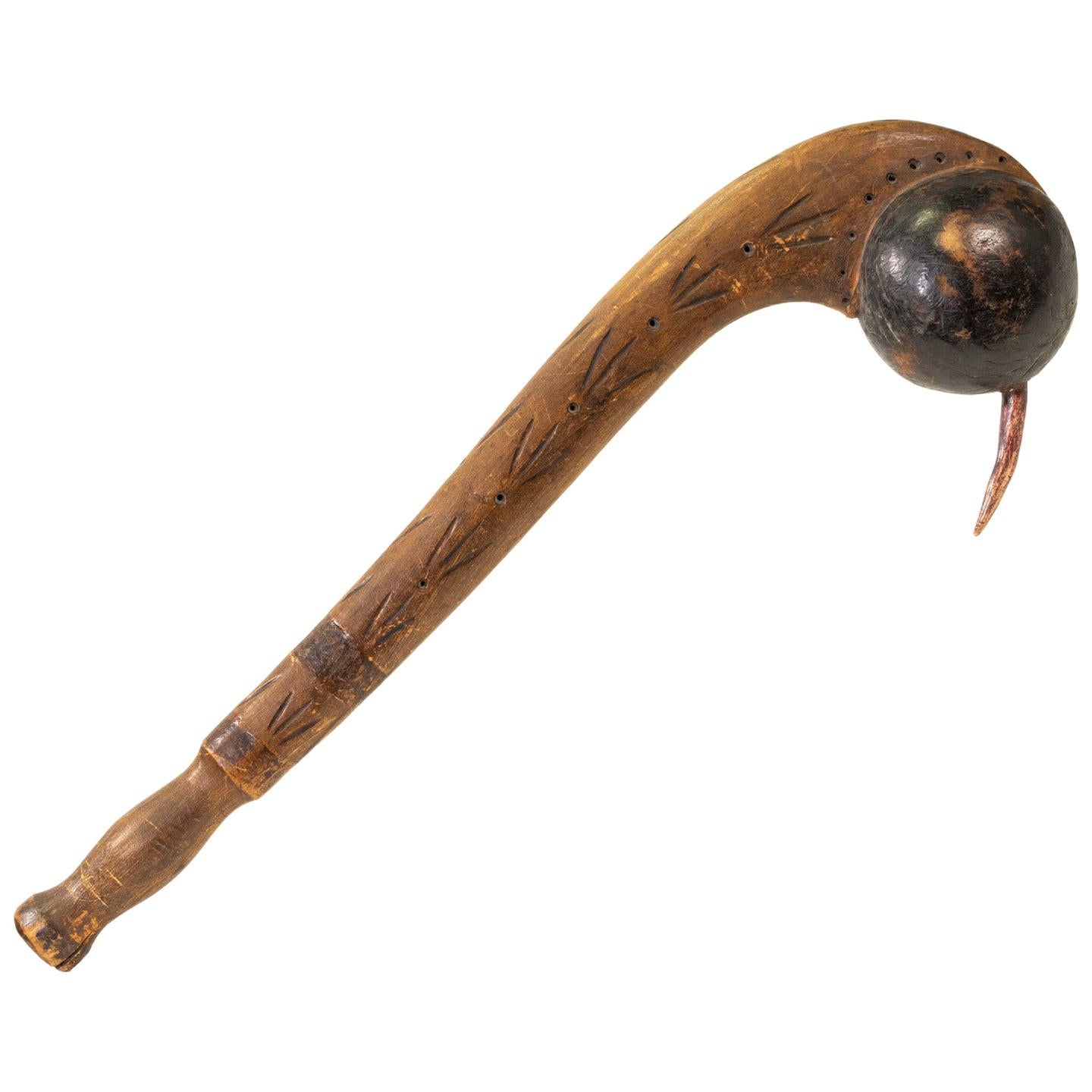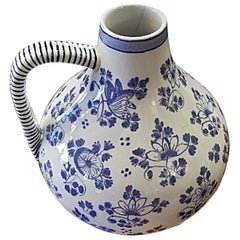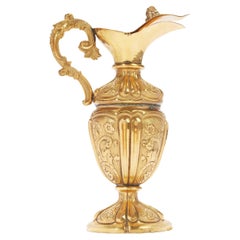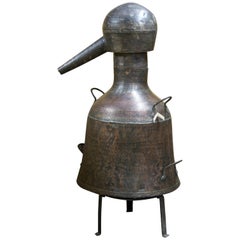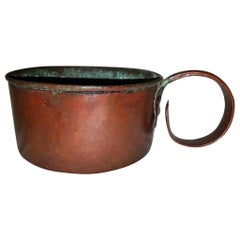
19th Century Civil War Copper Rum Cup or Mug with Provenance
View Similar Items
Want more images or videos?
Request additional images or videos from the seller
1 of 13
19th Century Civil War Copper Rum Cup or Mug with Provenance
About the Item
- Dimensions:Height: 4 in (10.16 cm)Width: 10.5 in (26.67 cm)Depth: 7.5 in (19.05 cm)
- Style:American Classical (Of the Period)
- Materials and Techniques:
- Place of Origin:
- Period:
- Date of Manufacture:1840-1860
- Condition:Wear consistent with age and use. Very good original condition.
- Seller Location:Dallas, TX
- Reference Number:1stDibs: LU3978119401872
About the Seller
4.9
Gold Seller
These expertly vetted sellers are highly rated and consistently exceed customer expectations.
Established in 2015
1stDibs seller since 2018
349 sales on 1stDibs
More From This SellerView All
- 19th Century Large Civil War Era Bronze and Tin PitcherLocated in Dallas, TXPresenting a fabulous historic treasure of times past, namely, a 19th century large Civil War Era bronze and tin pitcher. From circa 1850, this is an American frontier piece. I...Category
Antique Mid-19th Century American American Classical Pitchers
MaterialsBrass, Bronze, Copper, Tin
- American Hepplewhite Virginian Secretary Chest with Civil War ProvenanceBy George HepplewhiteLocated in Dallas, TXPRESENTING a FANTASTIC and HISTORIC Early 19C American Hepplewhite Virginian Secretary Chest with OUTSTANDING Provenance. This Secretary Chest was made in Virginia in the Early 19th Century, circa 1810. It is made of cherry, walnut and maple and is most definitely in the Hepplewhite Style of the period, with it’s original Hepplewhite brass drawer pulls. IT IS A REALLY INTRIGUING AND HISTORIC PIECE, ESPECIALLY, WHEN VIEWED IN CONTEXT WITH IT”S AMAZING PROVENANCE! This piece was originally owned by Major William Alexander Obenchain who ‘hailed’ from the State of Virginia. He was an engineer and was in the Virginia Corps of Engineers during the Civil War and served on General Robert E. Lee’s staff. It was acquired by him before the Civil War and we believe that this piece was on campaign with him during the War. We know for a fact that he fought at the Richmond Campaign in 1864, as we have, in our Collection, his original Field Map for that Campaign which ended the War. It has remained in family ownership ever since. It has come directly from the Family Estate, together with other VERY IMPORTANT items belonging to Major Obenchain and other IMPORTANT items that belonged to his wife, Eliza Calvert Hall-Obenchain. ALL these items contained in the Collection, are listed/posted individually on our Website. The top drawer is on retractable curved side hinge supports and pulls outwards and drops to reveal a secretary and writing area. The Bureau/Secretary Gallery has 6 drawers and 6 cubbies, a central tabernacle door with another drawer and 2 cubbies and this is flanked by 2 secret pull out compartments. The central tabernacle door has it’s original key and working lock. Closed, it is almost ‘flush’ like the rest of the drawers, with some very minor bowing through age. The 3 drawers underneath are graduated in size and it ends with a serpentine shaped base and sits on four hand carved legs with original metal casters, marked ‘Universal 3’. It has it’s original brasses and hardware throughout, save the addition to 2 contemporary replacement brass hinges to the drop down desk front, as the original hinges were broken, could not be repaired and were not supporting the weight of the drop down leaf. Some minor repairs but not noticeable. Otherwise, the piece is in it’s entirely, ORIGINAL condition! What makes this piece even MORE INTRIGUING and APPEALING HISTORICALLY, are the 2 ‘historic’ circular holes on the piece:- (1) in the back of the piece as seen in the photos. This hole is not symmetrical or fully round and appears to serve no purpose to the piece whatsoever. Sometimes, pieces have holes for wiring for lighting, put in them over the years, but this one never had such lighting or, indeed, any such explanation for this hole, AND (2) the rear hole is replicated, in the corner portion of the bottom drawer and someone (a very long time ago) has used a tin can top, to cover the hole in the back of the drawer. The tin can top is period to the Civil War Era and is embossed “Minimum Volume 1 Pint”. Our conclusion, is that (whilst we are, by no means ballistic experts) that these holes were created by musket balls, fired during one of the Major’s campaigns in the Civil War. It is entirely conceivable that this piece, being strapped into a covered wagon for carriage, would have been on it’s side. We are of the opinion that both holes, were caused or created by a musket ball entered the chest trough the base and back. We also believe that ‘the Major’, used what he had at his disposal on the battlefield, namely, a tin can lid to repair the hole in the drawer. SO THIS PIECE IS A VERY SPECIAL PIECE OF US HISTORY, INDEED! NOT ONLY IS IT AN EARLY 19th CENTURY AMERICAN PIECE, WITH A CONNECTION TO THE STATE OF VIRGINIA, THE CIVIL WAR, HISTORIC & IMPORTANT FIGURES IN THAT WAR AND IMPECCABLE PROVENANCE AND HISTORY! IT IS TRULY UNIQUE! William Alexander Obenchain. Born April 27, 1841 at Buchanan, Botetourt Co., Virginia. Parents: Thomas Jefferson Obenchain and Elizabeth Ann Sweetland. Entered VMI on July 18, 1859 as a member of the VMI (Virginia Military Institute...Category
Antique Early 19th Century American American Classical Historical Memora...
MaterialsBrass
- Early 19th Century French Utzschneider & Cie Sarreguemines PitcherBy SarregueminesLocated in Dallas, TXPresenting a very rare early 19th century French Utzschneider & Cie Sarreguemines Pitcher….Fleurus. Pattern. The pitcher is a classical French Sarreguemines piece of pottery, from circa 1830. This is an early piece of French transferware...Category
Antique Early 19th Century French Napoleon III Pitchers
MaterialsCeramic
- Important Confederate Field Map of Richmond VA 1864 with ProvenanceLocated in Dallas, TXPRESENTING AN HISTORIC AND EXCEPTIONALLY RARE AND IMPORTANT American Civil War Collection consisting of: (1) ORIGINAL and FULLY AUTHENTIC Confederate Field Map of Richmond, VA 1864 belonging to Capt W.A. Obenchain C.S. Engineers, (2) ORIGINAL and FULLY AUTHENTIC Surrender/Parole Paper for Capt. W.A. Obenchain dated 1st May 1865 at Greensboro, NC (3) ORIGINAL and FULLY AUTHENTIC Pamphlet for Hillsborough Military Academy, NC with Major W.M. A. Obenchain listed as 'Military Staff'. These ALL belonged to Captain (later promoted to rank of Major) William Alexander Obenchain and the battlefield map was his 'personal' field map for the Battle of the Richmond Peninsula in 1864, at the end of the US Civil War...Category
Antique Mid-19th Century American American Classical Historical Memorabilia
MaterialsCanvas, Paper
- Rare 19th Century English Tunbridgeware Hair Pin or SlideLocated in Dallas, TXPresenting an absolutely gorgeous and extremely unique and rare 19th century British Tunbridgeware hair pin/bobbin or slide. This slide is unlike any of it’s kind we have seen before…. it is a very rare survivor ! From circa 1860–1880. Made of walnut with gorgeous marquetry inlay on the entirety of the front with classic Tunbridgeware micro-mosaic all over the front. The rear is walnut. The marquetry inlay appears to be various different woods, namely, maple, walnut and satinwood. Would have been worn in a Lady’s hair bun with the micro-mosaic facing forward. This would have belonged to a very elegant lady in the mid to late 19th century. Tunbridge ware is a form of decoratively inlaid woodwork, typically in the form of boxes, that is characteristic of Tonbridge and the spa town of Royal Tunbridge Wells in Kent in the 18th and 19th centuries. The decoration typically consists of a mosaic of many very small pieces of different coloured woods that form a pictorial vignette. Shaped rods and slivers of wood were first carefully glued together, then cut into many thin slices of identical pictorial veneer with a fine saw. Elaborately striped and feathered bandings for framing were pre-formed in a similar fashion. There is a collection of Tunbridge ware in the Tunbridge Wells Museum and Art Gallery in Tunbridge Wells. The famous makers of Tunbridge ware were in the Tunbridge Wells area of Kent; their most notable work was from circa 1830-1900. Early makers of Tunbridge ware, in Tunbridge Wells in the mid-18th century, were the Burrows family, and Fenner and Co. In the 19th century, around 1830, James Burrows invented a technique of creating mosaics from wooden tesserae. Henry Hollamby, apprenticed to the Burrows family, set up on his own in 1842 and became an important manufacturer of Tunbridge ware, employing about 40 people. Edmund Nye (1797–1863) and his father took over the Fenner company when William Fenner retired in 1840, after 30 years in partnership with him. Thomas Barton (1819–1903), previously apprenticed at the Wise factory, joined the Nyes in 1836, and worked as Nye’s designer; he took over the business in 1863 and continued there until his death. In Tonbridge (near to Tunbridge Wells), George Wise (1703–1779) is known to have had a business in 1746. It continued with his son Thomas, and Thomas’s nephew George (1779–1869), who took over in 1806. In its early years the company made articles such as workboxes and tea caddies with prints of popular views; later items had pictures created from mosaics. Their workshop in Tonbridge, Wise’s Tunbridge Ware Manufactory, was next to the Big Bridge over the Medway; the building was demolished in 1886 to widen the approach to the bridge. Tunbridge ware became popular with visitors to the spa town of Tunbridge Wells, who bought them as souvenirs and gifts. Articles included cribbage boards, paperweights, writing slopes, snuffboxes and glove boxes. At the Great Exhibition of 1851, Tunbridge ware by Edmund Nye, Robert Russell and Henry Hollamby was shown; Edmund Nye received a commendation from the judges for his work. He exhibited a table depicting a mosaic of a ship at sea; 110,800 tesserae were used in making the picture. The manufacturers of Tunbridge ware were cottage industries, and they were no more than nine in Tunbridge Wells and one in Tonbridge. The number declined in the 1880s; competent craftsmen were hard to find, and public tastes changed. After the death of Thomas Barton in 1903 the only surviving firm was Boyce, Brown and Kemp, which closed in 1927. Marquetry was an old technique which was continued by Nye and Barton to create images such as birds or butterflies. ‘Green Oak’ as caused by the fungus Chlorociboria aeruginascens. Stickware and half-square mosaic was invented by James Burrows in about 1830: a bunch of wooden sticks of different colours, each having triangular or diamond-shaped cross section, were tightly glued together; in the case of stickware, the resulting block was dried, then turned to form an article such as the base of a pincushion. For half-square mosaic, thin slices were taken from the composite block, and applied to a surface.[1][2][4] Tesselated mosaic, was a development by James Burrows of half-square mosaic; it was adopted by George Wise and Edmund Nye. Minute tesserae were used to form a wide variety of geometric and pictorial designs. Many sorts of wood were used for the various colours; about 40 were in regular use. Only natural colors were used; green was provided by “green oak”, produced by the action of fungus on fallen oak. Designs for articles were often taken from designs of Berlin wool work.Category
Antique Late 19th Century English High Victorian Collectible Jewelry
MaterialsSatinwood, Walnut
- 19th Century American Walnut Childs Chair with ProvenanceLocated in Dallas, TXPresenting an absolutely stunning and historic 19th century American walnut childs chair belonging to Lida Calvert Hall 1867. This Chair has impeccable provenance: It is part o...Category
Antique Mid-19th Century American American Craftsman Chairs
MaterialsWalnut
You May Also Like
- 18th Century Italian Baroque Gilded Ewer Repoussé Copper Liturgical PitcherLocated in Milan, ITA stunning Italian gilt copper ewer dating back to 18th century with a circular body featuring a quadripartite decoration defined by the repoussé of a double vertical ribbed frame that frames tableaux decorated with floral scrolls; the background of these sections is finely dotted by chisel tool to underline a very pleasant relief to the embossed parts thanks to the burnishing. An excellent and unique hand-made pitcher, selected in a private collection of Northern Italy. This rare golden jug was created to serve wine during the Eucharistic celebration, the Christian liturgical practice. it is an Italian work of art that dates back to 1700, with a wonderful fire gilding, for collectors. In good age related condition regardless of a small dent in the middle part of the body, consistent with the eighteenth-century dating. The cast handle takes up the motif of the volutes present on the body of the ewer. The spout is closed by a hinged lid with a small floral knob, with minimal deformations near the hinge compromising its perfect closure. In the upper part, there are welding signs...Category
Antique Mid-18th Century Italian Baroque Pitchers
MaterialsCopper
- Still, Copper, Iron, 19th CenturyLocated in Madrid, ESStill with flared copper body, cap on the top with the usual piece on these objects and a simple support to place the appliance on the fire. It has four iron handles to move it. This...Category
Antique 19th Century European Neoclassical Scientific Instruments
MaterialsCopper, Iron
- Red and Black FDR's Fala Scotty Dog American Glass Pitcher, circa 1930-1940Located in Philadelphia, PAA charming Pre midcentury pitcher, American clear glass, circa late 1930s-early 1940s. The Scotty dog glass collectible craze began when President Franklin D. Roosevelt’s Scottish Te...Category
Mid-20th Century American American Classical Pitchers
MaterialsGlass
- 19th Century Micmac Spiked War ClubLocated in Coeur d'Alene, IDMicMac spiked club. Chip carved handle with face on head having forged file spike at top with embedded and poured lead. Brass tacks and band of red painted hide...Category
Antique Mid-19th Century American Native American Native American Objects
MaterialsWood
- 19th Century Northern Plains War ClubLocated in Coeur d'Alene, IDNorthern Plains war club with stylized stone buffalo head. Raw hide wrapped adorned with brass tacks. Much patina from use, blood, grease and sweat. Mu...Category
Antique Mid-19th Century American Native American Native American Objects
MaterialsOther
- Civil War-Era Side Drum, Made by George Kilbourn, 1859Located in Colorado Springs, COPresented is an original Civil War-era side drum with a pair of wooden drumsticks. This is a rope tension drum with a wooden body, ropes, and leather tabs. An iron tack pattern surro...Category
Antique 1850s American American Classical Musical Instruments
MaterialsIron
Recently Viewed
View AllMore Ways To Browse
Antique Copper Cup
Vintage and Antique Copper Cups
Hall Ceramics Pitchers
Mugs And Pitcher
Silver On Copper Pitcher
Large Antique Mugs
Hall Mug
Robert Ogden
Antique Cups And Mugs
Antique Rummer Glass
General Lee
Copper Measuring Cups
General Robert E Lee
Copper Mug Used
Copper Mugs
Copper Mug
Used Copper Mugs
Jefferson Cup
